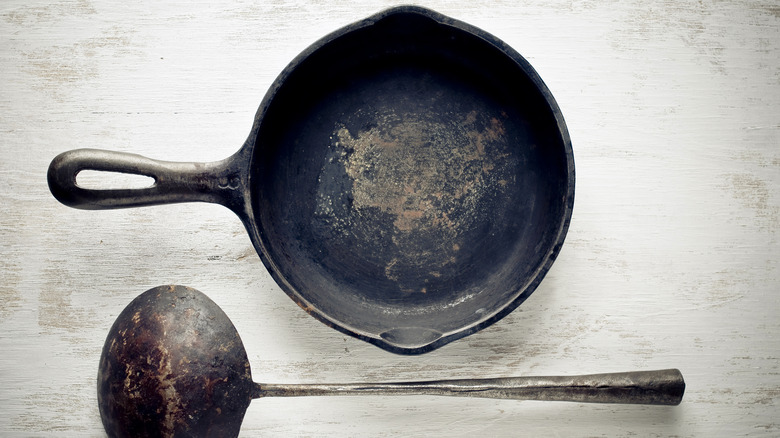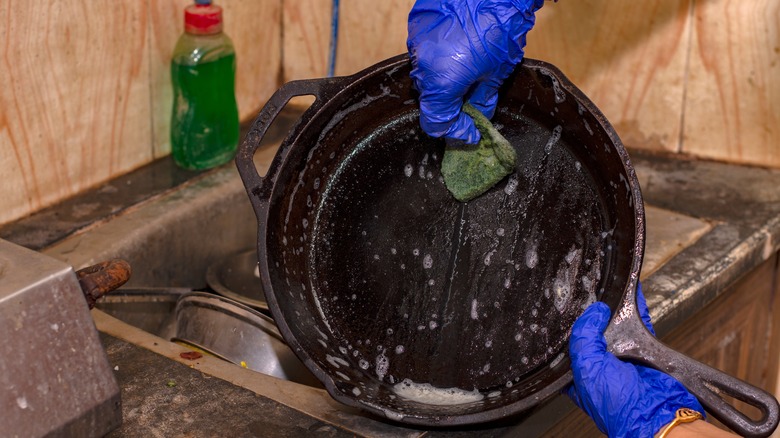What It Means When Your Cast Iron Pan Starts Flaking (And How To Fix It)
When you hear any talk about cast iron, there must be mention of seasoning. It's the buzzword that unites cast iron aficionados everywhere. Seasoning is basically a natural non-stick layer that develops over time as oil polymerizes onto the pan's surface through heating, making it slick and rust-resistant. For those who swear by their cast iron companions, maintaining this seasoning is a sacred duty, guarded with an almost fervent zeal. So when a cast iron starts flaking, it's like a cook's worst nightmare.
But don't worry, you're not alone. Flaking in cast iron pans is pretty common and can happen for a few reasons. One culprit is a poor seasoning procedure. If you rush the process or don't give each layer of seasoning enough time to bond with the pan, it can start to flake off. The same goes for using oils with a low smoke point, especially for those first few layers of seasoning. Oils like EVOO or flaxseed might be tasty, but they're not great for seasoning since they can break down at high temperatures, leading to flaking down the road.
And then there's the acid factor. Cooking acidic ingredients in your cast iron pan can wear down the seasoning, especially if it hasn't had time to cure properly. So, while that tomato sauce might taste delicious, it could be compromising your pan's seasoning. But hey, don't panic just yet. Flaking seasoning might sound like a big problem, but it's totally fixable. Here's what you can do.
Fixing the flaking on your cast iron pan
First off, assess the damage. If it's just a few small flakes, you might be able to get away with a quick touch-up. But if your pan's seasoning is beyond repair, with extensive flaking, you might need to strip it down completely and start afresh. The first step is to scrub the pan. You can use coarse salt and rub it against the entire surface of the pan using a rug or go for a chainmail scrubber or steel wool. The goal isn't to remove every last inch of the seasoning but to ensure all the loose bits come off.
After scouring, rinse off the flakes and wash the pan with soap and water. If there's still some flaking left, repeat these first two steps. Once your pan is stripped down and cleaned, dry it thoroughly using paper towels or a lint-free cloth.
The next step is re-seasoning the cast iron pan. Grab some oil — something with a high smoke point like vegetable or grapeseed oil. Rub a thin layer onto the pan's surface, ensuring you cover every inch. Then, pop it in a hot oven (450-500 degrees Fahrenheit) upside down for about an hour to let the oil polymerize onto the pan, creating a new layer of seasoning. And remember, seasoning a cast iron pan is a journey. It'll take a few cooking sessions and regular seasonings to get it back to its perfect non-stick, slick surface.

